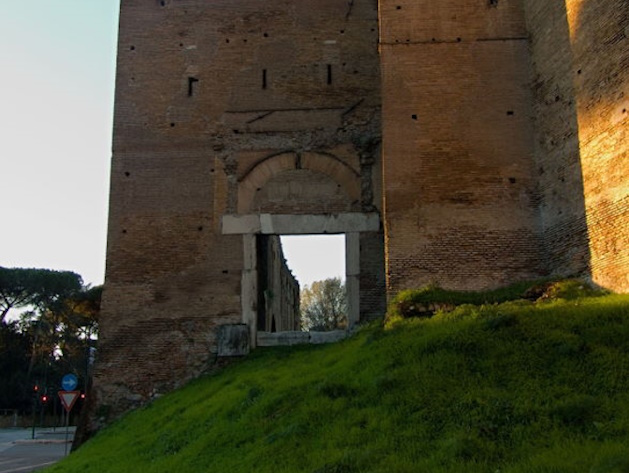
The Bastione Ardeatino (Ardeatino or Sangallo Bastion) is a 16th-century fortress located in Viale di Porta Ardeatina.
The structure consists of the bastion, flanked by two curtain walls through which it fits inside the Aurelian Wall in the section delimited by Porta San Paolo and Porta San Sebastiano. The site is where the so-called Porta Ardeatina, from the period of Imperial Rome, was previously located. It was destroyed to make way for the new fortification.
The bastion was attributed to Antonio da Sangallo the Younger because of a series of fortification designs. However, there is no certainty that they are related to the bastion. After all, Antonio da Sangallo was the leading military architect in the Urbe at the time, as well as the architect of all the papal works since 1536, at the behest of Pope Paul III Farnese, whose coat-of-arms stands on the corner front of the bastion. The fortification was built to improve the defences against the threat of the Turks coming from the southern Tyrrhenian coast.
The bastion has a different architectural structure compared to the surrounding ancient walls; it has funnel-shaped loopholes, typical of the 16th century, to house cannons. The crenellations were replaced by casemates used to fire with small arms, serving as a shelter for soldiers and ammunition, also constructing eight octagonal chambers with underground passages. During the works for the bastion, Paul III also applied the Sangallo to the defensive reinforcement of the Leonine City, causing works on the Aurelian Walls to slow down and be abandoned around 1539. The bastion remained unused even in the following centuries as the Turkish threat disappeared.
In the areas adjacent to and inside the bastion are some architectural structures and sculptural decorations dismantled during the demolition of the Spina di Borgo in the 1930s for the realisation of Via della Conciliazione.
Information
 Condividi
Condividi
Location
To find out about all accessibility services, visit the Rome accessible section.











































